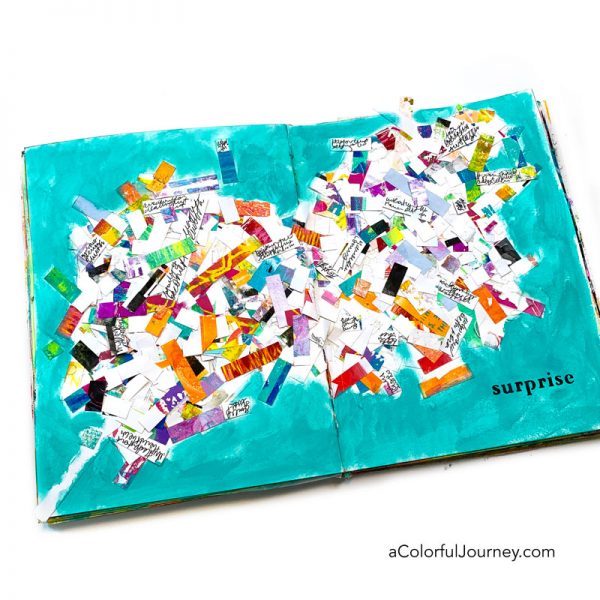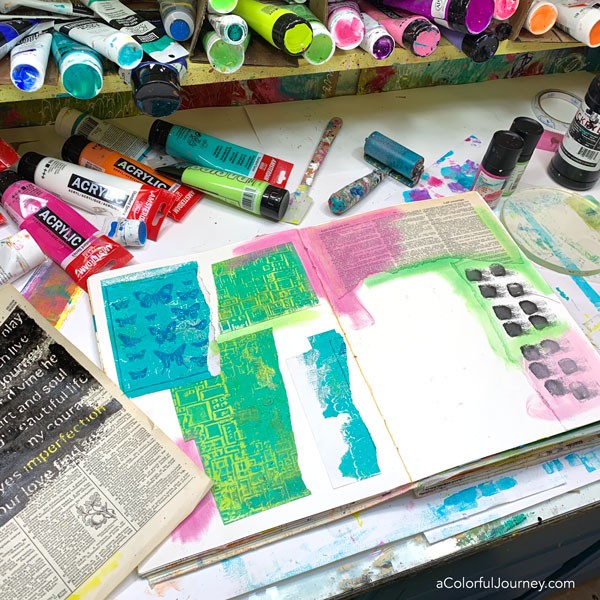
This is where the play began. A random hodge podge of a mess. But this isn’t where it ended! Here’s a peek at the art journal page in progress. See what the layers turned into over on my guest post at StencilGirl Talk!
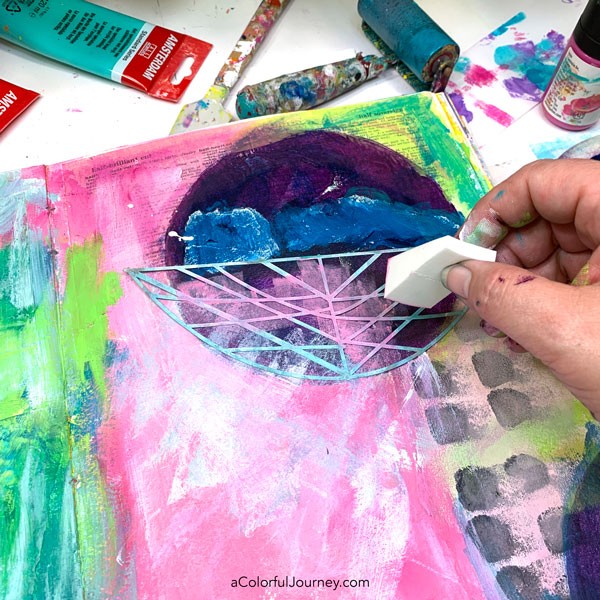

This is where the play began. A random hodge podge of a mess. But this isn’t where it ended! Here’s a peek at the art journal page in progress. See what the layers turned into over on my guest post at StencilGirl Talk!

You can use household items to make tools for your Gel Press plate. Today, I’m using toothpicks to solve a problem. I love writing on colorful papers, but I need lines on there if I have any hope of keeping the writing close to straight. So a few toothpicks and cardboard but along with these prints there is also the clean up prints!
What pen did I use to write on it? An inexpensive pen that has held up extremely well to writing on paint. At the time of publishing this, it was about $3 for 8 pens!
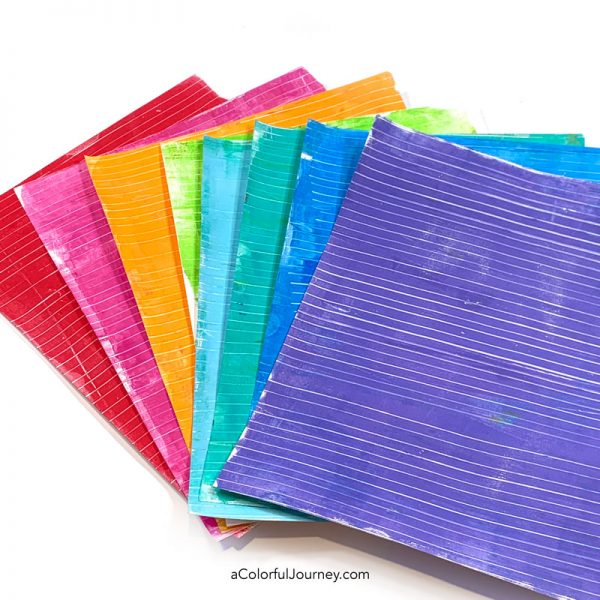
Along with the lined papers, there were also the clean up prints! So be sure to check out the video to see how these build up layer by layer!
Want to more about gel printing? I’ve got a page of resources to help you here!
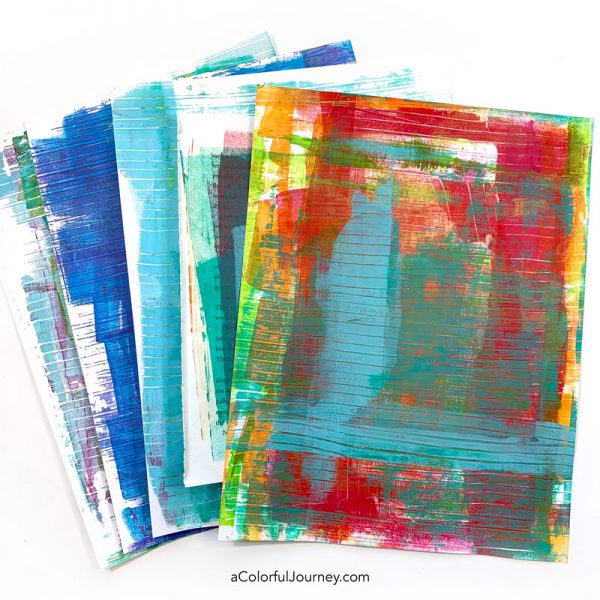
Scooping up and tossing this pile of leftover bits from a gel print project entertained me for longer than I want to admit. And it inspired a bit of play in my art journal! I’m not a patient person, so check out how I got these all glued down the easy way.
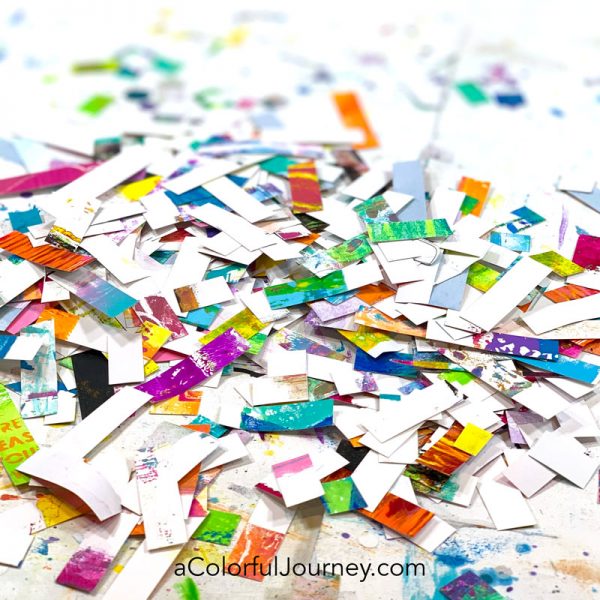
This could have been tedious to glue each piece of paper down, but I decided to go for the fast way, by slathering it with glue and the tossing the confetti on there. Words don’t do it justice, so be sure to check it out in the video.
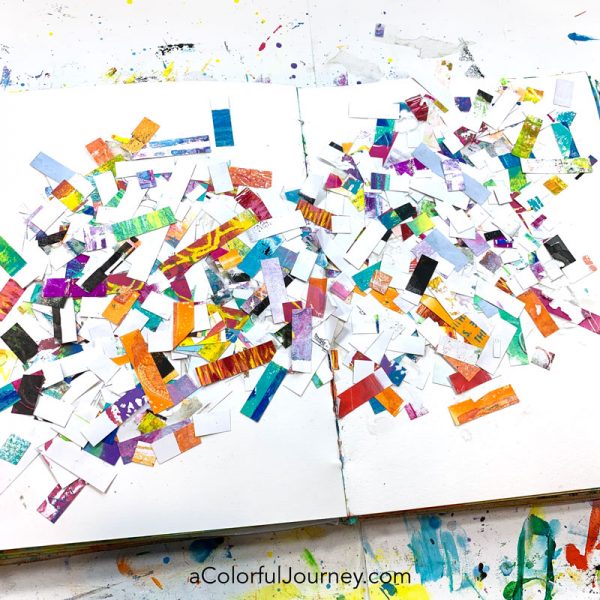
Once the glue had dried, all that white space around the edges were painted. I actually entertained the idea of carefully painting around each piece of white paper. I let that idea go quickly because I had a better idea. And I’m just not that patient.
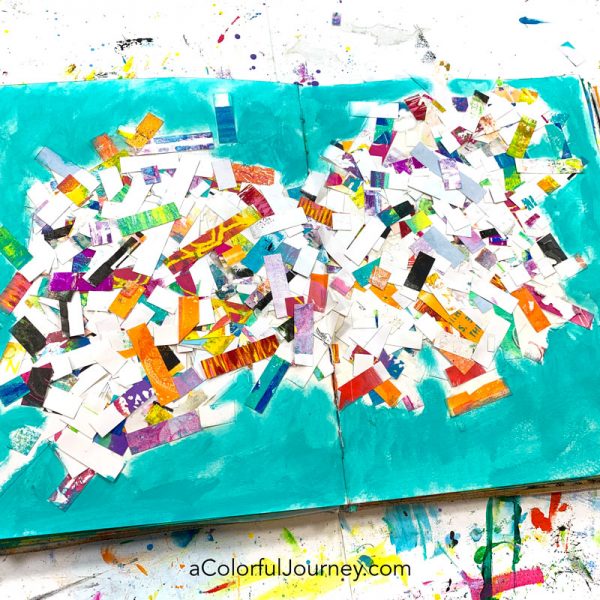
Those white areas are the backsides of the gel printed scraps. That means naked paper that is easy to journal on with any pen.
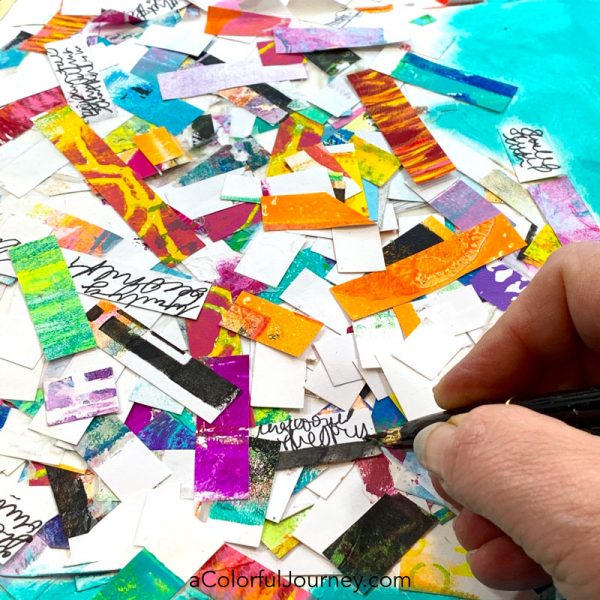
To create the title for the page, I wanted the word surprise but the stencil, Feelings and Emotions 2, had the word surprised. By simply covering up the d, I magically had the word I wanted.
I designed them this way to give you a lot of flexibility when using any of the stencils in the Feelings and Emotions collection (there are 3 of them)
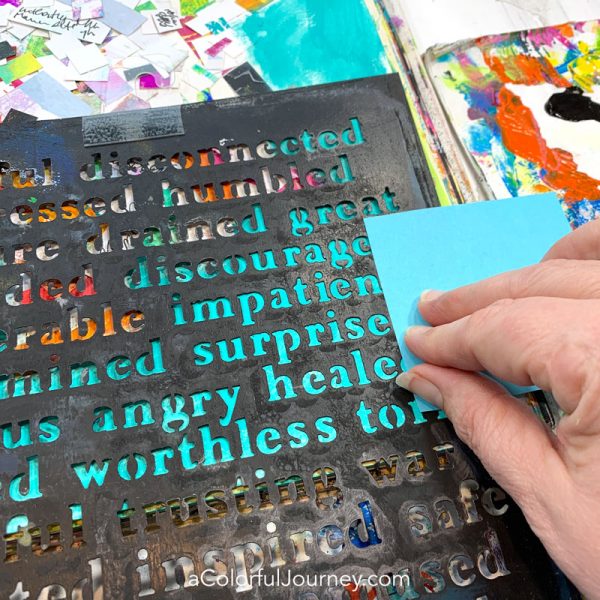
Art journals are a great place to have fun so if you’ve ever got a bunch of little bits of leftovers on your counter, let go and toss them onto your page!
If you want more ways to have fun and let loose in an art journal check out my free workshop, Permission to Play.
